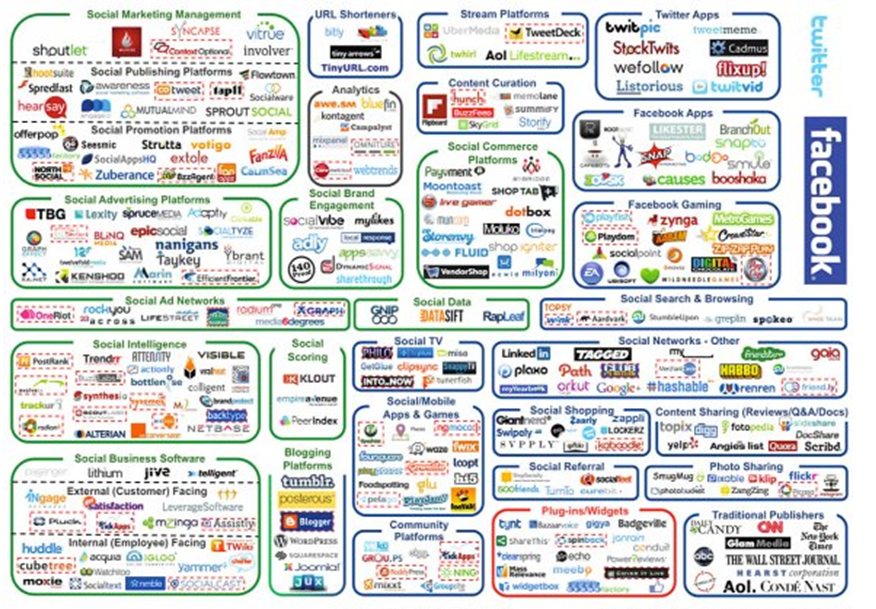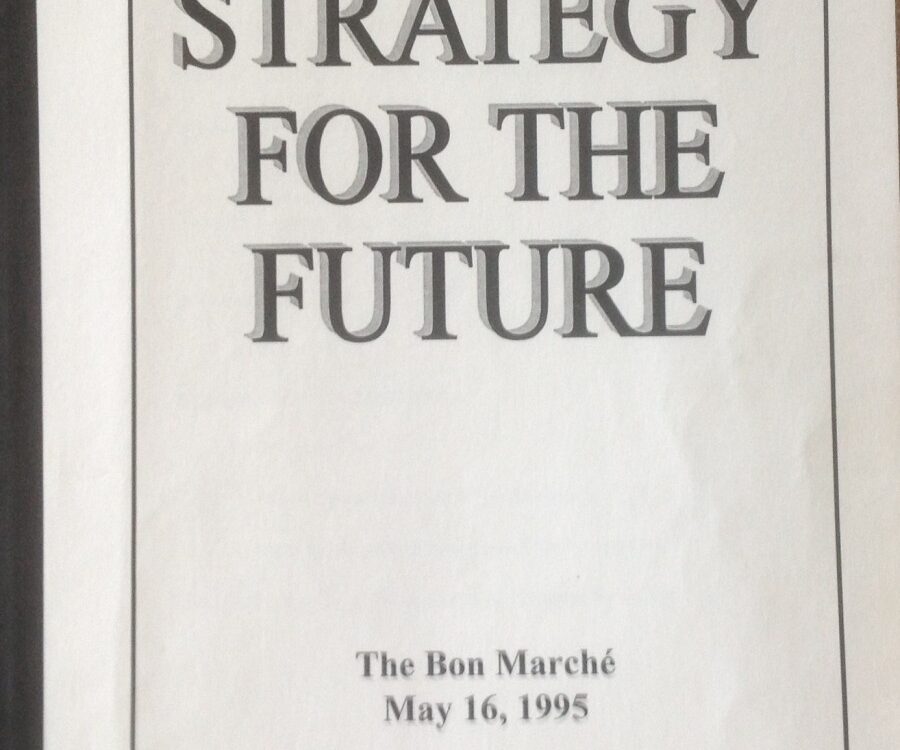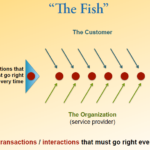In the world of Loyalty the newest and most powerful forces stem from the fast changing dynamic of Social Networking and Social Media.
The primary drivers are incredibility common and familiar: the basic need and desire to engage with like minds, display passion for an idea, a product or cause, and the need to find or impart value in a relationship. The key values of tools like Facebook are discovered in uninhibited access to information that is relevant, authentic, and transparent. On March 24th, 12 professionals from various major non-profits met to discuss how social networking tools might, and already do, impact their communications efforts and fund-raising . What follows are the notes from that meeting..
The State of the Development of Social Networking as part of a Non-Profit Communication Plan
How do we get into social networking today but be able to be ready for the continuous transformation during the next 2-3 years?
The ultimate goal for non-profit communication is to positively impact the bottom line.
There is always the question of whether social networking/new media will reach the right audiences. The fastest growing Facebook group is 50 and older (staying in touch with the children.
The hardest part of the issue is that old media was very controlled and mostly outbound – new media is interactive, live and not easy to control. What is appropriate?
On-line giving is the fastest growing channel in the world of non-profit contributions.
How are NPOs and other organization to identify the choices and the potential connectivity of Social media applications – How will the applications affect an organizations ability to strategically crowd-source to create change?
Social tools and the concepts and make up of communities are is consistent and ever accelerating transition – how will an organization ride this change forward?
The primary drivers of growth in the social media space are incredibility common and familiar: the elemental need to engage with like minds, passion for an idea, a product or a cause. And the need to find or impart value in a relationship.
Where is Social Networking in the Non-Profit Organizations Who Participated in this Discussion
No one has developed a clear vision of exactly how this new media should all fit with their current communication program. In fact, trying to define how to measure success is still an open question – though, in the end, growing the number of supporters and levels of giving (# of people and average gift size) are a required outcome.
Seattle Center is at the front end of an entire re-do of their Web, Email and other Communication. They have invested in Customerville to be much more aggressive at receiving 24/7 feedback from the Seattle Center users. This will also increase the number of comments they receive from users. Seattle Center staff is also helping to drive the City of Seattle on the use of social networking tools as part of the City’s communication strategy– Resources—communications leadership is driving the change.
Goodwill has just started to use the new media tools – using a Blog for their designer sale and launching a Facebook page. There is a cultural resistance to this new media and, like many non-profits, senior staff is skeptical about the value of the effort. Meetings with board members are scheduled to build a better understanding of the value. Resources – FTE’s involved.
United Way hired one experienced individual to pioneer the use of new media and has started to use the Group and Friends applications as a way to support fundraising. These efforts led to a great conversation about the individual employee and their use of Facebook from two perspectives – an individual or as an employee (discussed in the Issues section). Resources – one person on the effort.
Alliance for Education has just started the discussion of what to do with social networking. They have formed a task force hoping to get 12-15 people – 26 volunteered. Their issue is education, and it is dominated by a few strong vocal people. How does this new media impact getting a more diverse voice and dialog. Resources – none to date.
UW Athletics is a self-supporting department of the University. The Athletic Department is the most advanced organization to participate. Their approach is tightly controlled by the NCAA’s rules, as well as the fact that the rights to their athletic content are owned by their broadcast partners. They have 23 individual sports Facebook pages – use YouTube, and Twitter, and strive to make these official sites the best, 1st and best insider-information sites. There are at least 20 non-official pages and groups which are self generated by students and fans, plus lots of sports blogs. How do they make the official UW Athletic sites the primary location for information? Resources – 1 person plus a team of sports information people and marketing staff are involved.
Seafair, like UW Athletics, is a self-sustaining non-profit with many existing complex relationships, and is trying to define how best to use these social networking tools. What do they get from putting lots of energy and resources into building out these tools? They have built a Facebook page but, so far, have not defined how this could impact their business model. Resources – 1 person, part of his job.
Other Non-Profits – There were other professionals present that were working with or were volunteers with Ballard Food Bank, Childhaven, YWCA and the Leukemia Society. In all cases, even with professional help, these organization were in various steps of defining how this new media should be used – continuous feedback blogs, wickie’s were all being tested as a tactic around a specific event or fundraising effort.
Goals and Tactics
As the discussion evolved, a variety of goals and tactics conversations emerged.
How to use Facebook to build community? This was the primary discussion, as Facebook is considered the primary force driving social networking.
How to use images – Facebook is rich with images. How does a non-profit create value through images?
Wiki on the Facebook site (web pain) was a tactic used to allow staff and volunteers to all be on the same page for the execution of a fundraising event – great way to share information to all people involved.
To build this into a community, it must be a multi-faceted approach. The community involves staff, the users, the volunteers, the donors, and all interested individuals.
Creating an engaged community demands that you know what they think about and who they are.
Many non-profits have many stakeholders, i.e., Goodwill – the shopper and the job training/education users; Alliance for Education lots of diverse communities. How do you use these tools to relate to all these different stakeholders?
- How does the use of social networking impact fundraising?
To be relevant, you need to be where the audience is. You have a website, but video is searched for on YouTube.
How do these channels relate to becoming the official voice of the organization? Email lists, websites and printed newsletter – how does this instant continuous interactive communication fit in?
Facebook has a proven tool in its event application. This is the first element that can be integrated into existing efforts – but does it replace print or the E-vite tools?
The overriding goal is to use this tool to support, build, and enhance your community in support of your causes.
Social media needs to become the planning focus – it’s not just a page, it’s a plan that focuses on enhancing personal engagement.
If you’re good at this, you leverage social networking to get people into your blog – increasing interactivity.
You must create an environment that reinforces that this is worth the time.
The goal is to target all social networking into a comprehensive coordinated plan with “an engaged community” as the new driving focus.
Engagement is the effort to have all parts of your organization and community establish greater levels of emotional connections, and feel good about giving feedback and input that they believe improves your organization.
It all has to be one plan – Websites, Emails, Events, Print, Direct Mail, Social Networks, Blogging, Twitter, Flicker and YouTube.
How to Build an Engaged Culture
The biggest obstacle facing the issue of making the leap to a social networking/engaged strategy is our existing cultures. Our current marketing and communication strategies are very controlled – create a message and force it out. In order to build an engagement culture, you need to (in most cases) recreate the culture of the organization – If You Don’t Really Do It, You Can’t Become It.
Steps to Re-engineer the culture:
Read the right books:
Tactical Transparency by Shel Holtz, John C. Havens, Lynn Johnson
Groundswell by Josh Bernoff
Fostering Sustainable Behaviors by Doug McKenzie-Mohr and William Smith
Creating Customer Evangelists by Ben McConnell and Jackie Huba
Have all salaried employees join Linked In. Linked In is a professional networking site that is good for your employees – they fix their resumes and get used to joining groups and the investment of time.
Learn to use Google Reader. Every employee has professional arenas of interest or expertise that, if they use the Reader, they will become better informed and discover the power of continuous flow of information.
Add user engagement behaviors to your employee job descriptions – to ensure employees understand that this is part of the job.
Share the Communication Plans with employees and make sure social networking is an important component.
Key Issues to be Resolved
There is an old saying – “Once you teach a bear to dance, you better be ready to dance when the bear wants to”.
Transparency – The world of social networking is based upon transparency and this jumps to a discussion of an organization’s ability to be transparent. Management tends to be skeptical of the value of transparency. It is not been the organization’s standard of the last 20 years.
Lack of Control – is a major issue once you ask people for feedback and input. What do you do with it? Do you have to listen or even respond?
Much of Facebook’s and other social networking tools are built on personal ownership. Yet, when a non-profit organization develops a page, what is the role/relationship with the employee’s page?
The discussion of being authentic, genuine and relevant – how do you keep the “Facebook page” authentic?
If the true goal is to enhance fundraising, how does this work with the other issues of authentic and transparent.
The idea that employees of an organization have to deal with their integrity when their organization is on Facebook. What’s the purpose? Is it just about marketing?
So, is working on adding social networking tools to a non-profit’s communication plan worth it? How and what do we measure?
If the organization culture does not totally embrace this two-way engagement communication, can anything really happen?
One of the biggest issues is the problem of defining policies around the use of social networking while working. This is similar but more complicated than the use of the computer for personal use at work.
If the organization decides to use the blog as the method for user dialog, how does the organization participate? The CEO or a designated voice?
In some ways the real question is what and how do you manage your current donors and members, and how does this effort toward social networking impact and/or relate to that strategy? Does this extend and enhance the growth of these very important stakeholders?
Final Thoughts
We are in a major transforming communication time. Although Facebook represents the current most important challenge, the reality is – in the next 2-3 years, what will this look like? Therefore, what elements of the organizational culture and communication activities need to be supported to ensure you are ready for the future?
The real change that social networking (Facebook, Blogs, increased Interactivity, YouTube) creates is that now, building an integrated and interactive community is more important than just outbound communication strategies. As some younger people say, Email is so old fashioned. All these communities are very multi-faceted to include employees, users, supporters, donors – all interacting in the same place.
In the new world as “newspapers” die and we “google” our information, the information we put out will be judged in light of the concept of the “Google Reader” or “Information aggregator”. The community has to be the first to know, feel like inside information, the best deals, and transparent so it feels like a great member benefit.
“In many ways, Twitter is better than Facebook for this reason”.
The communication plan needs to be flipped – the plan needs to start with the social networking focus and layer on traditional media.
This transformation requires resources:
1st the culture needs to change
2nd there must be clear defined leadership
3rd it must become the communication priority
This effort is not just about the organization culture – it is about a complete re-energizing of the entire community culture.
Last thought…
This meeting was a great first step, as it was obvious from the discussion no one has figured it out. We all seem to understand that something is happening – our traditional communication is less effective and everyone seems to be doing some social or professional networking. So how do we proceed?
I hope these notes help for this discussion.







